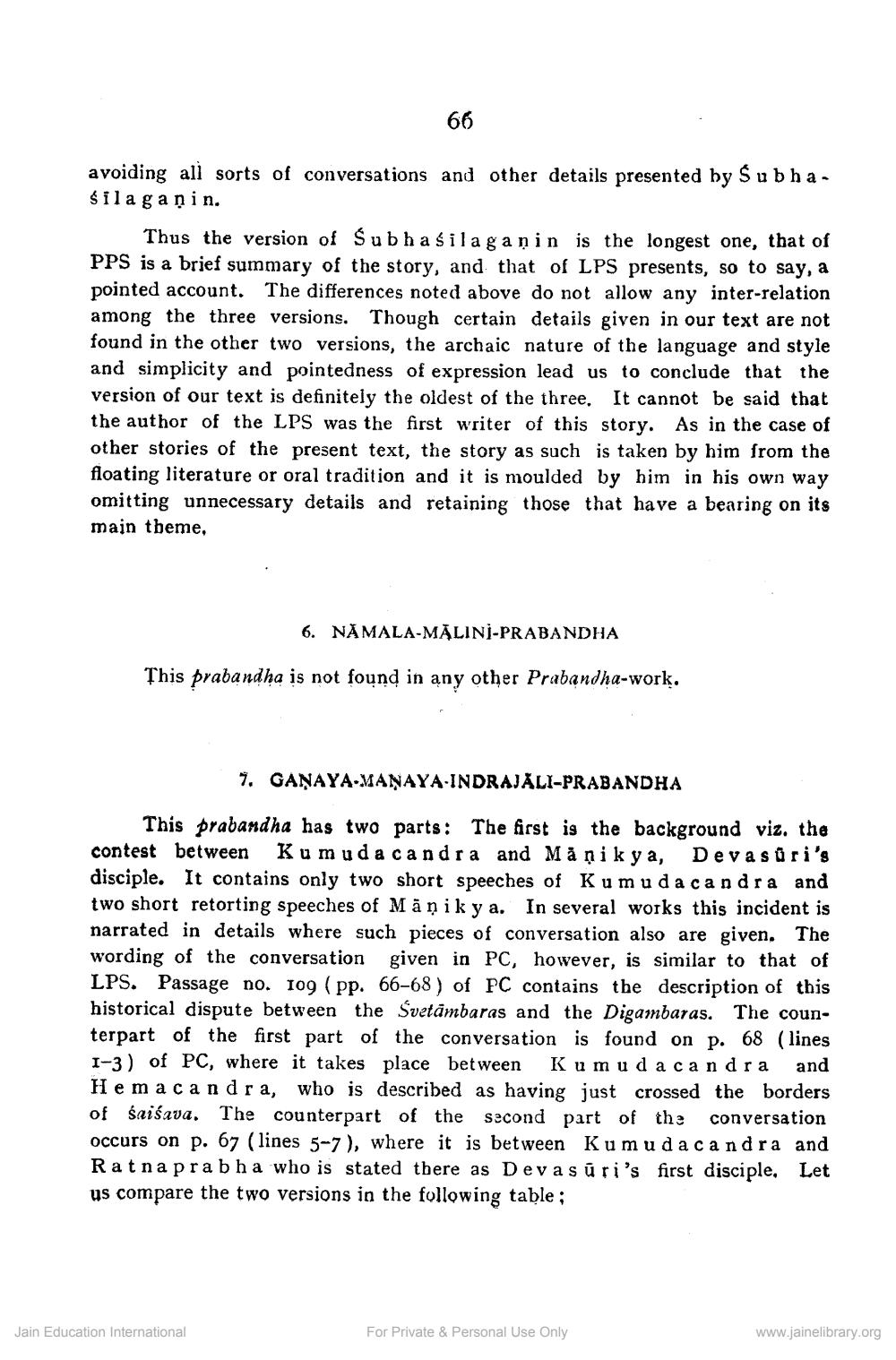________________
66
avoiding all sorts of conversations and other details presented by Subhasila gaṇin.
Thus the version of Subha silaganin is the longest one, that of PPS is a brief summary of the story, and that of LPS presents, so to say, a pointed account. The differences noted above do not allow any inter-relation among the three versions. Though certain details given in our text are not found in the other two versions, the archaic nature of the language and style and simplicity and pointedness of expression lead us to conclude that the version of our text is definitely the oldest of the three. It cannot be said that the author of the LPS was the first writer of this story. As in the case of other stories of the present text, the story as such is taken by him from the floating literature or oral tradition and it is moulded by him in his own way omitting unnecessary details and retaining those that have a bearing on its main theme,
6. NĂ MALA-MALINİ-PRABANDHA
This prabandha is not found in any other Prabandha-work.
7. GANAYA-MANAYA-INDRAJALI-PRABANDHA
This prabandha has two parts: The first is the background viz. the contest between Kumuda candra and Manikya, Deva sūri's disciple. It contains only two short speeches of Kumuda candra and two short retorting speeches of Māņiky a. In several works this incident is narrated in details where such pieces of conversation also are given. The wording of the conversation given in PC, however, is similar to that of LPS. Passage no. 109 (pp. 66-68 ) of PC contains the description of this historical dispute between the Svetāmbaras and the Digambaras. The counterpart of the first part of the conversation is found on p. 68 (lines 1-3) of PC, where it takes place between Kumu da can dra and Hemacandra, who is described as having just crossed the borders of śaiśava. The counterpart of the second part of the conversation occurs on p. 67 (lines 5-7), where it is between Kumuda candra and Ratna prabha who is stated there as Deva sūri's first disciple, Let us compare the two versions in the following table ;
Jain Education International
For Private & Personal Use Only
www.jainelibrary.org




